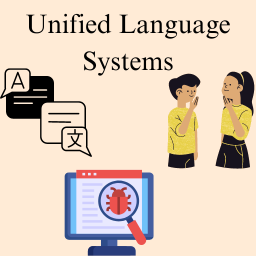Unified Language Systems and Nursing Terminologies


What is Unified Language Systems,Knowledge for UMLS,Meta Thesaurus as Database,Role of UMLS,Language of Used Terms.
What is Unified Language Systems
A unified language system is a network of linked terms that allows integration of existing sets of machine readable terms, such as thesauri, classification systems, and nomenclatures for the purposes of information retrieval.
Whereas a uniform language system would necessitate that a common set of terms is used for multiple purposes, a unified language system builds on the strengths of existing systems that have been designed from a variety of perspectives and for a broad range of purposes.
The primary unified language
systems of relevance to nursing are the Unified Medical Language System (UMLS)
and the Unified Nursing Language System (UNLS).
Knowledge for UMLS
In 1986 the National Library of Medicine began a long term research and development project to build the UMLS, using the strategy of successive approximations of the capabilities ultimately desired.
The UMLS currently
comprises four knowledge sources: the Meta thesaurus, the Semantic Network, the
SPECIALIST Lexicon, and the Information Sources Map. All sources are available
via the Internet through the Knowledge Source Server.
Meta Thesaurus as Database
The Meta thesaurus is a database of information on concepts that appear in at least one of a set of controlled source vocabularies, thirty source vocabularies provide the 252,892 concepts and 542,723 concept names in the 1996 Meta thesaurus.
These include Medical Subject Headings ( MeSH ), International Classification of Diseases: Clinical Modification, and SNOMED International.
Four systems specifically designed for use by nurses are source vocabularies in the Meta thesaurus: the North American Nursing Diagnosis Association (NANDA) Taxonomy 1, the Omaha System, the Georgetown Home Health Care Classification, and the Nursing Intervention Classification (NIC).
The Meta thesaurus is organized by concept, with entries
connecting alternative names for the same concept (eg, synonyms, lexical
variants, translations) from different vocabularies. Thus, shortness of breath,
breathlessness, and dyspnea share a common concept identifier but different
lexical identifiers in the Meta thesaurus.
Role of UMLS
The UMLS Semantic Network provides a consistent categorization of concepts represented in the Meta thesaurus and a set of relationships between the concepts. The 1996 version includes 135 semantic types.
are broadly categorized into the semantic types of entity or event. Examples of semantic types of relevance to nursing are “Finding,” “Individual Behavior,” “Therapeutic or Pr eventive Procedure,” and "Disease or Syndrome."
The primary relationship among
concepts is "IS A," for example, "Pain Management IS A
Therapeutic or Preventive Procedure." Other relationships include temporal
for example, "Diabetes Mellitus PRECEDES Diabetic Retinopathy" and
causal, for example, "CMV Retinitis is CAUSED BY cytomegalovirus."
Language of Used Terms
The SPECIALIST Lexicon comprises a set of commonly used English and biomedical terms. Entries include the base form of the term and its lexical variants, for example, assesses, assesses, and assessed.
The Information Sources Map describes the publicly available databases of the National Library of Medicine and selected expert systems and databases from outside the National Library of Medicine.
The American Nurses Association Steering Committee on Databases to Support Nursing Practice has endorsed the concept of a unified nursing language system within the structure of the UMLS.
The nursing care elements of the nursing minimum data set (NMDS) define the data elements of a UNLS: nursing diagnosis, nursing intervention, nursing outcome, and nursing care intensity. The current UNIS comprises the four-nursing systems in the UMLS: NANDA Taxonomy 1, the Omaha System, the Georgetown Home Health Care Classification, and NIC.
Extensive research is underway to enhance and refine the existing
UNLS, for example, the Nursing Intervention Lexicon and Taxonomy, the Patient
Care Data Set, the Nursing Outcomes Classification, and the International
Classification of Nursing Practice.




Give your opinion if have any.